Experts share how to clean terracotta pots effectively in 5 simple steps to restore their look and keep plants healthy
Spruce up your favourite pots and protect your plants from disease with these 5 easy steps

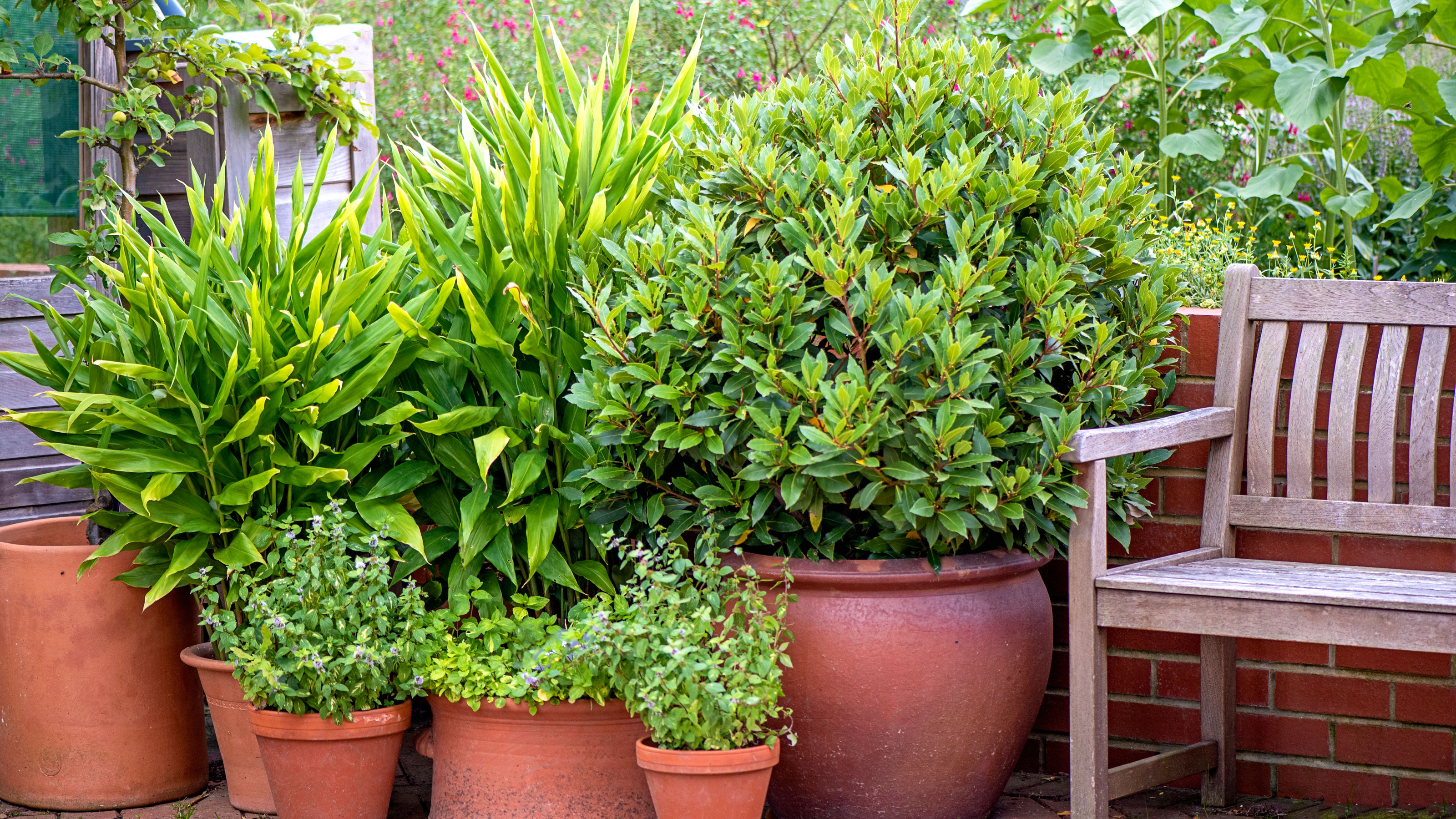
If you’re anything like me, you’ve probably got a growing collection of terracotta pots dotted around the garden, on windowsills, or stacked in the shed waiting for spring planting. However, I don't know how to clean terracotta pots correctly, which, according to my mum and gardening experts, is actually pretty important.
Terracotta is pretty durable, with pots lasting for years, decades even, if you look after them right. But they are also incredibly porous, and that’s where problems can start. Those little white marks and weathered stains I admire for their ‘rustic charm’ can actually be signs of salt build-up or lingering bacteria.
While we know that learning how to clean garden tools is crucial to prevent diseases in new healthy plants, it turns out terracotta can absorb water, soil residue, and even disease-causing pathogens, which can affect plant growth or encourage pests, too. That’s why, whether you’re reusing old favourites or sprucing up second-hand finds in your container garden idea, it’s so important to clean them thoroughly and properly.
So, we’ve spoken to the experts to find out exactly how to give your terracotta pots the TLC they deserve, so they not only look lovely but also keep your plants healthy and thriving.
Why is it important to clean terracotta pots?
My mum casually mentioned a few weeks ago that not cleaning my terracotta pots might be why my plants are looking limp and unhealthy, even though I water and feed them regularly, and I had no idea I was making this big container garden mistake. So I asked a few experts for more info on why it's so important to clean them.
'A deep clean should help terracotta pots look like new again. Over time, you might notice that your terracotta pots have white crusty buildup, green algae, or even moss growing on them, especially if they've been outside through the colder months,' explains Lee Trethewey, garden furniture expert at Sustainable Furniture.
And Morris Hankinson, founder and managing director of Hopes Grove Nurseries, agrees, adding that cleaning your pots is a cleaning job must even if yours look reasonably clean and tidy.
Sign up to our newsletter for style inspiration, real homes, project and garden advice and shopping know-how
'It's good practice to clean pots anyway if you've had diseased plants or any pests in them, as you don't want to accidentally spread them onto new plants. Remember that terracotta pots absorb more than other pots (e.g. plastic), so you may not always see signs of the above, but that doesn't mean they're not there.'

Morris Hankinson is the founder and managing director of Hopes Grove Nurseries Ltd, the UK’s only specialist grower-retailer of hedging plants. He established the thriving business in 1992, shortly after graduating with a Commercial Horticulture Degree from Writtle College, Essex.
What you'll need
- Hard bristle brush - like this Bassine Scrubbing Brush from Amazon
- White vinegar - like Miniml's lemon scented White Vinegar from Amazon
- Baking soda - Arm & Hammer's baking soda from Amazon is a great value option
- Washing-up liquid
- A large bucket or basin
- A sponge or cloth (go for a microfibre cloth like these Spontex ones from Amazon, for extra cleaning power)
- Sandpaper or steel wool for stubborn marks (use an extra fine sandpaper like this Harris one or this steel wool from Amazon)
Step-by-step
1. Empty the pot and brush down
Start by emptying out the pot, getting rid of any old soil and dead plant bits. Graham Smith MCIHort, National Sales Manager at LBS Horticulture, says it’s important to clear everything out before you start cleaning properly.
Once it’s empty, give the pot a good rinse to wash off loose dirt and dust. It doesn’t need to be perfect at this stage. Just clean enough to see what you’re working with.

Graham Smith MCIhort is the national sales manager at LBS Horticulture. He has extensive knowledge in the horticultural and gardening industries, and prides himself on using this to help gardeners of all skills create their perfect outdoor space.
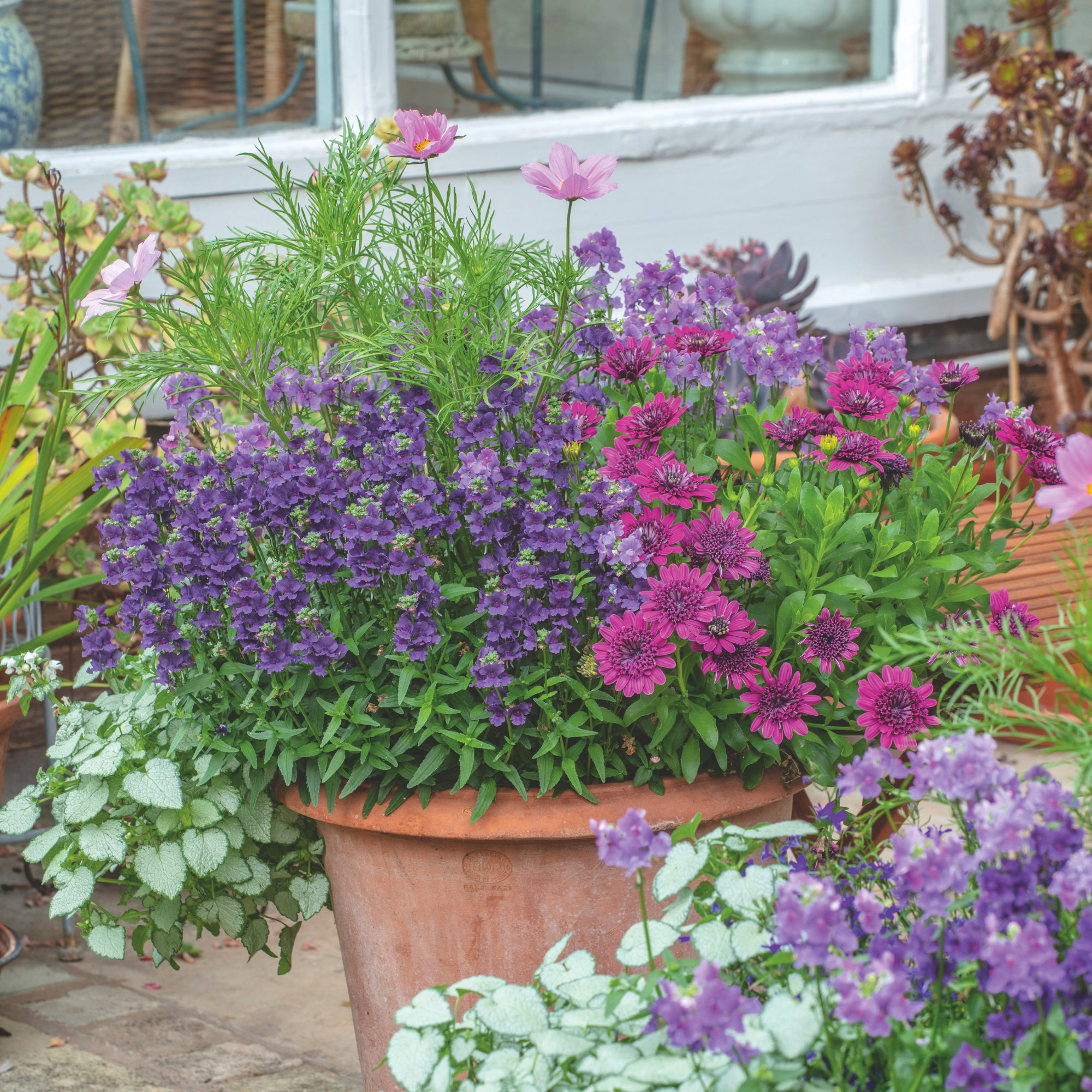
2. Soak it to lift off stains
Next, it’s time to deal with those white, chalky deposits that love to cling to terracotta. These are usually mineral salts from water, and they can be stubborn.
Make a gentle cleaning solution by mixing warm water with a bit of mild soap or washing-up liquid in a bucket or basin, with just enough to cut through the dirt without being too harsh. Scrub gently with a stiff-bristle brush like this Charles Bentley Bassine scrubbing brush from Amazon.
If your terracotta pots have really stubborn stains, Graham recommends adding a splash of vinegar to the mix, or you could use a handy spray bottle option like Miniml's lemon scented white vinegar solution from Amazon. It gives the solution an extra boost and helps lift the grime without harming the surface.

Lee Tretheway, from Sustainable Furniture, also recommends soaking the pots in a mixture of about 100ml bleach per litre of water for 10 minutes. This will kill off any lingering bacteria, fungi, or pests.
He also adds that 'white vinegar is one of the most effective natural cleaners for terracotta pots. especially good for tackling that white, chalky residue that's often left due to the buildup of minerals.'
'However, vinegar is acidic, and terracotta is a porous, soft clay. Because of this, you should always dilute the vinegar and never soak the pots for too long,' he explains. He recommends soaking your pots in increments rather than in one big go to avoid any damage.

Lee Trethewey is the general manager at Sustainable Furniture. Having worked in the industry for 10+ years, Lee is an expert in all things interior and garden design, as well as well-versed in eco-friendly practices and sustainable sourcing.
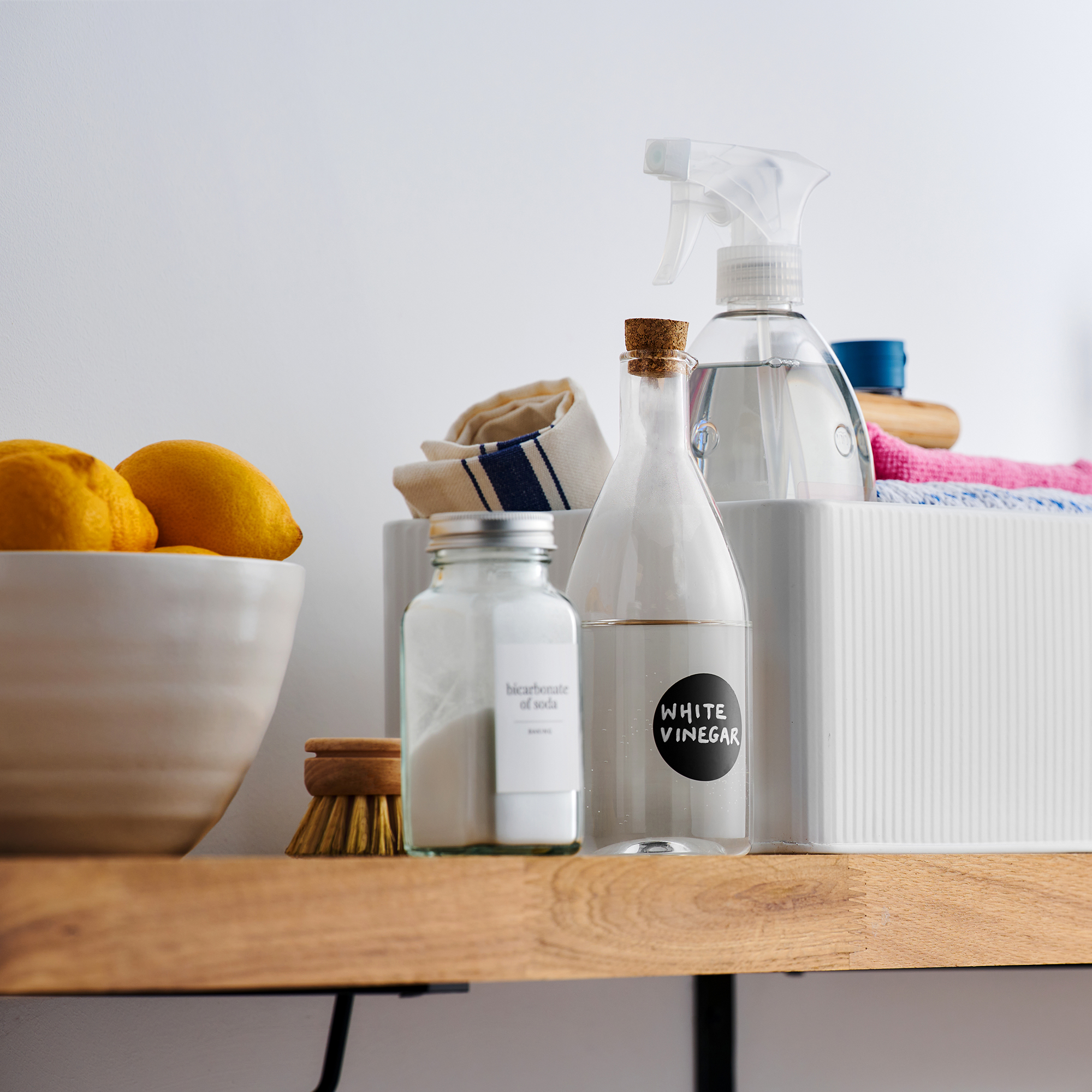
After soaking, give the pots another scrub inside and out with your brush or sponge, and you’ll see years of build-up start to shift.
Baking soda is a good, gentle abrasive to try if you're still struggling with stains, says Lee. 'It's mildly abrasive, which is why it works, however, it's not really abrasive enough to cause any damage to the terracotta,' explains Lee.
'Baking soda also has natural deodorising and antifungal properties, which is handy if your pots have developed any smells or signs of mildew from being outside.'
3. Wash and rinse in warm water
Once you’ve tackled the grime, it’s time for a thorough rinse. Graham says to use warm water to wash away any leftover cleaning solution.
As this is your final clean-up, don’t rush it. Make sure there’s no trace of soap, vinegar, or lingering dirt, especially if you’re planning to replant straight away.
A proper rinse will there's no residue left behind that could affect your plants later on. Give the pots a good swirl under the water, and let them drain fully before moving on.
5. Dry it really well and sand it down
Now for the easy bit: just let your pots dry out completely. Graham recommends giving them at least 48 hours before planting again.
Terracotta’s great for plants because it’s nice and breathable, but that also means it soaks up water, so you want to make sure there’s no damp left that could cause mould or frost damage, which will also help winter-proof your plant pots.
Pop them in the sun or somewhere warm, and don’t rush it. They should feel totally dry before you fill them with fresh soil.
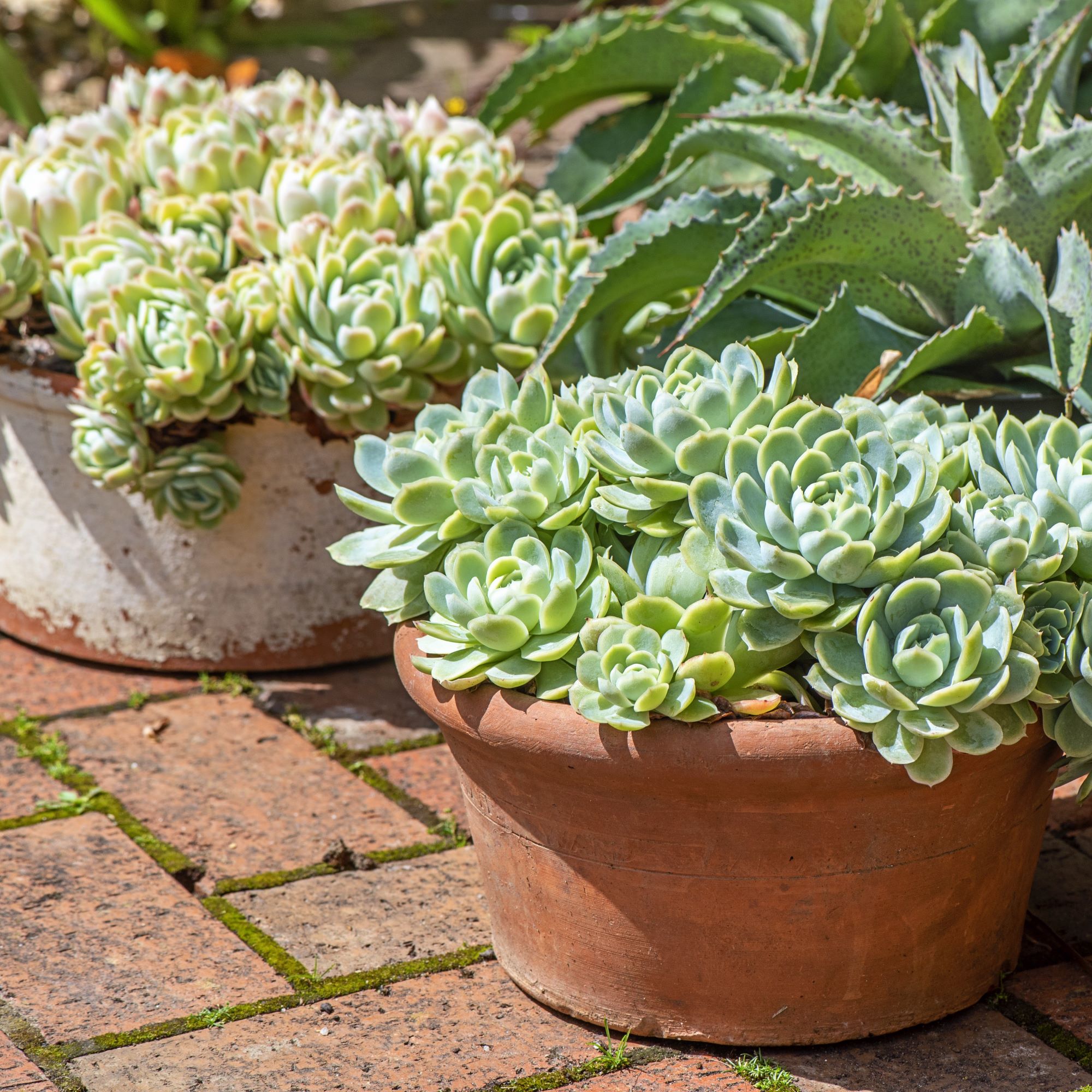
If your pots are still looking a little worse for wear, especially older ones with stubborn stains or rough patches, try giving them a gentle once-over with fine sandpaper like this Harris sandpaper from Amazon.
Buff away the surface grime and bring out the terracotta’s natural warmth and colour. But take it easy, advises Morris Hankinson from Hopes Grove Nurseries. He warns that using anything too harsh, like a metal scourer, can leave scratches behind. Stick to softer, less abrasive options and go gently for the best results.
5. Finish by sealing your pots
This final step is completely optional, but well worth considering if you want to keep your terracotta pots looking their best for longer.
After they’re fully dry, you can apply a plant pot sealant like CaplinTec's Plant Pot sealer spray from Amazon to help protect the surface from future stains and water marks. It’s a simple extra touch that can extend the life of your pots, especially if they’ll be sitting outside in the elements like heavy rain.
Just make sure to choose a sealant that’s plant-safe and breathable, so your pots still do what they do best: keep your plants happy. Although Lee adds that the only thing to consider is that it'll have an effect on the pots' breathability.
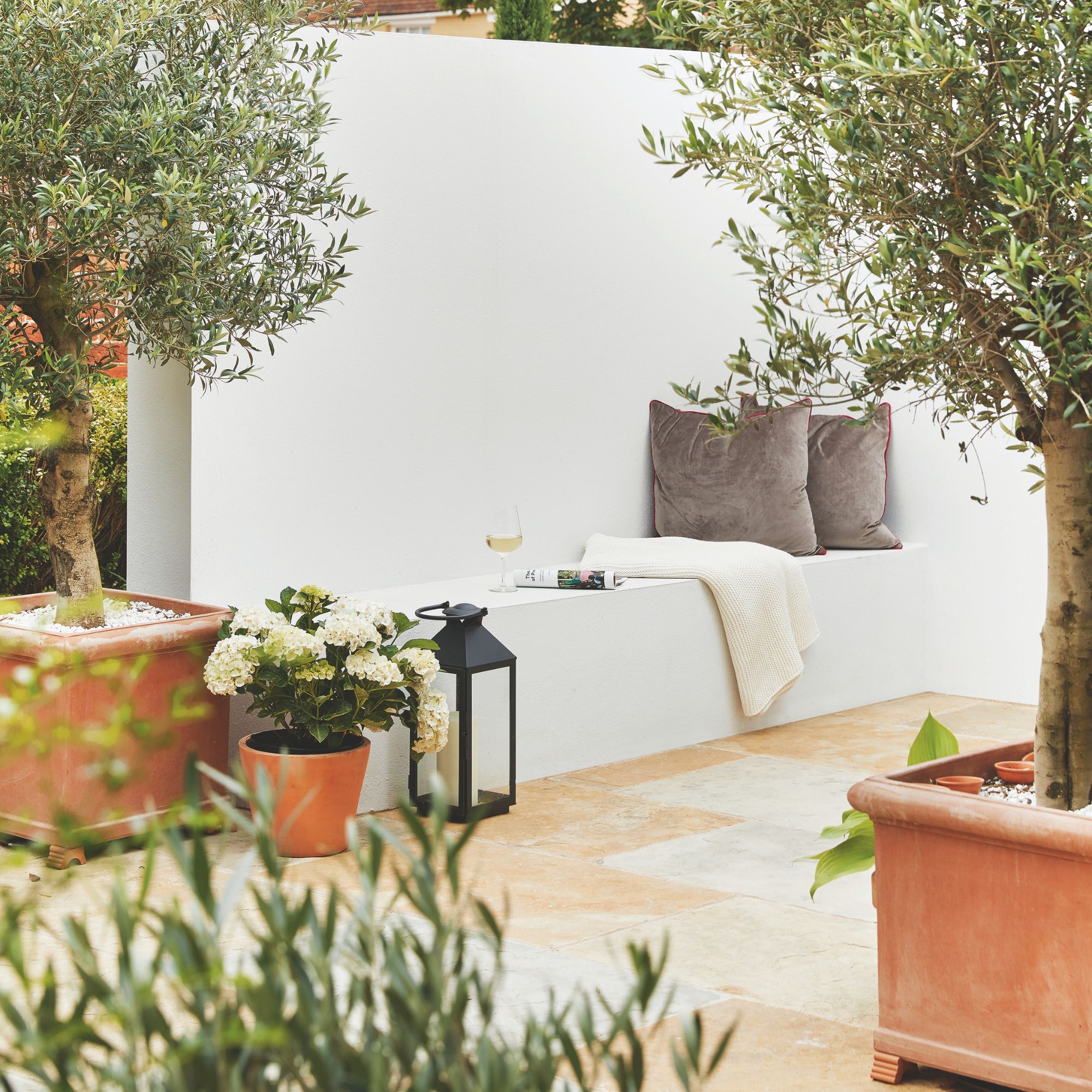
How often should you clean terracotta pots?
Terracotta pots should be cleaned at the end of every planting cycle, especially if the previous plant suffered from pests or disease.
Graham Smith from LBS Horticulture recommends this routine to help remove any white, crusty deposits caused by salt or mineral build-up, which can not only look unsightly but also affect the health of new plants.
'These deposits are a result of fertiliser and tap water accumulating on the inner and outer surfaces of the pot due to its porosity. If left in place, these deposits can burn the roots of plants and affect the soil pH and nutrient uptake,' explains Graham.
'Regular upkeep can also help the pots to retain their colour and prevent staining. Once cleaned, ensure that clean pots are stored away from dirty ones to prevent any contamination. This is because any remaining diseases, fungi or pests can linger in these pots and potentially infect new plants that are placed within them.'
Now you know how to clean terracotta pots correctly, so you can plant up some lovely shrubs, fragrant plants and low-maintenance plants for pots.
And if you're wondering what to do with plant pots at the end of the summer season, we've got expert advice on that too.

Jenny is Senior Digital Editor and joined the team in 2021, working across Ideal Home, Real Homes, Homes & Gardens, Livingetc and Gardeningetc. Since getting on the property ladder, her passion for interior design and gardening has taken on a new lease of life. She loves collecting and salvaging unique items (much to her other half's despair) but sniffing out stylish home bargains is her one true love.